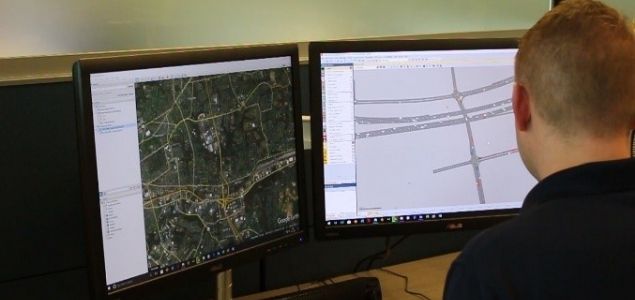Delivering on the Promise of STIC Innovations
Advancing transportation innovations to save Pennsylvania taxpayers money and hassles is a primary goal for PennDOT, and it has experienced great success with the Design Build Traffic Control Plan (DBTCP).
Championed through the Pennsylvania State Transportation Innovation Council (STIC), which is celebrating its 10th anniversary in 2022, this innovation allows highway contractors and the designers to work closely on the final design of the Traffic Control Plan to keep drivers moving as efficiently as possible through construction areas.
A conceptual plan, rather than a finalized plan, is provided in the project's bid package. DBTCP allows the contractor flexibility in selecting materials, construction methods and available resources. DBTCP reduces the need for change orders because the construction team will be responsible for the completeness and quality of the Final Traffic Control Plan. In addition, DBTCP will allow the construction team to explore cost savings, to respond to schedule changes and to receive input from other members involved in the construction of the project.

Steve Bolt, the STIC Innovation Owner, has spoken to each of PennDOT's 11 engineering districts and found that at least 75 projects have used the Design Build concept for Work Zone Traffic Control.
"We've had positive results across the board," said Bolt, regional director with Remington & Vernick Engineers.
As an example, District 12, based in Uniontown, has used DBTCP for all of its recent interstate projects, along Interstate 70. For the latest project, the project manager took lessons learned from the earlier I-70 projects and fine-tuned the new plan. One of the lessons learned throughout the projects is that the contractor's DBTCP can change the conceptual plans and hence lead to some environmental changes and needs. To account for that, District 12 includes a provision in the bid package that spells out that the contractor is responsible for any required permit and plan revisions."
"Design Build Maintenance and Protection of Traffic offers the district another tool to improve our service to the travelling public," said Vince Greenland, P.E., assistant district executive for design in PennDOT District 9, based in Hollidaysburg. "It provides us with the flexibility to let the contractor work as efficiently as practicable, as their means and methods evolve on a project and in turn minimize disruption to our customers."
Added Christopher C. Flad, P.E., acting district traffic engineer in PennDOT's District 8, based in Harrisburg:
"Under the right circumstances, Design-Build Maintenance and Protection of Traffic can be an effective tool at the district's disposal to help deliver projects safely and efficiently. Empowering the contractor in this way matches the construction process to the contractor's resources and support network, which ultimately benefits the safety of the workers as well as those traveling through the project area."
He noted that since 2015, on just three projects, the innovation saved roughly $100,000 in design costs and saved time as well.
Overall, this innovation brings the ingenuity of the contractors into the final design of the work zone traffic control process. We have seen a benefit in time-savings and cost-savings, while bringing all of the partners closer in communication with each other, thus making a better construction project.
For more information on this and other STIC innovations, visit www.penndot.pa.gov/stic.
The author of this article, Rachel Duda, is the Assistant District 12 Executive for Design.